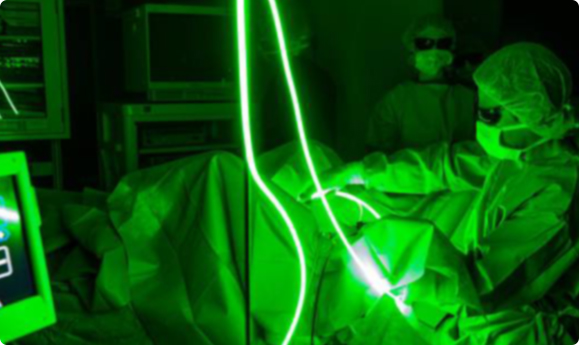The wavelength characteristics of this laser make it the ideal for vaporising tissues. Tissue from the prostate adenoma is fulgurated to open a passage through it, thus allowing urine to flow again without difficulty.

1. Vaporisation
It is the ideal laser for vaporisation.
It should only be used in small to medium-sized prostates, i.e. maximum 60-80 grams.
Advantages
Disadvantages
2. Enucleation of the adenoma
Enucleation of the adenoma should be the go-to technique, since it is a procedure in which all the prostate tissue is extracted, resolving the obstruction in the greatest degree(mimics open surgery.) The green light laser was created and developed to vaporise, not to enucleate. The limitations caused by vaporisation versus enucleation in comparison to other lasers, has led to initiate enucleation with this laser. Enucleation always achieves the same or better functional results than vaporisation.
It does not seem to be the most suitable laser for enucleation, as it produces a lateral shot that challenges enucleation. This may lead to more stress during enucleation with possible sequelae such as urethral stenosis and/or urinary incontinence (there is no scientific evidence in this regard).

Urología Tratamiento develops its activity in: